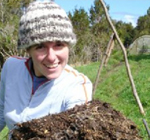
go organic! go wwoof'ing!
Sick of tour holidays that make you wake up at ungodly hours and rush you through tourist sites when you want to take a longer, closer look? Have too many handbags ...
More
text and images . Pauline Chan .
Up in the Himalayan mountain ranges in Uttarakhand state lies a magical land where fairies frolic and flowers have magical powers to protect the valley and all its wealth within. The villagers of Bhyundar were most blessed to have this Valley of Flowers in their backyard as it was the earth version of the 'Nandan Kanan'- the mythical and magical Garden of Indra - where enchanting meadows were covered with flowers and draped with silver streams and shimmering seats of snow. Myths and folklores have been spun to venerate the beauty of the valley and the reality is every bit as magical as the stories told. Every year during the monsoon season, about 300 varieties of flowers bloom, giving the meadows a colourful carpet of soft, billowing stems of bloom.
The Bhyundar Valley or Valley of the Flowers National Park in Garhwal Himalaya is an alpine valley, formed by retreating glaciers whose periodic advances pulverised hard rocks, resulting in a smooth U-shaped valley which was later colonised by numerous plants. The altitude of the valley ranges from 3,200 metres to 6,675 metres and such a variation in altitude provides a tremendous diversity of landscape and ecosystems. Its rich collection of endemic plants and animals deservedly earned itself a place in the list of the UNESCO World Heritage Sites since 14th July, 2005.
The Valley of Flowers is about 595 kilometres from New Delhi. The nearest airport is in Dehradun, 295 kilometres away and the nearest railway station is in Rishikesh, 276 kilometres away. By road, you can drive from Rishikesh for about 10 hours to Joshimath and then another hour to Govind Ghat. From Govind Ghat, it is a 13-kilometre trek along a steep, narrow but well-defined mountain trail to the base camp at Gangaria (about 3,048 metres). The start of the valley, where all the flowers are, is 3 kilometres from the village of Gangaria.
The Valley of Flowers is open from April to October as the rest of the year is covered in snow. The best time to go to the Valley is from July to August when the flowers are in full bloom after the first monsoon rain.
The park is protected for preservation, hence access to the park is restricted to daylight hours from 6 a.m to 6 p.m. The last entry is at 3 p.m. so as to allow time to explore the park and be out of it by 6 p.m. There is a Forest Department check point at the beginning of the park. This is where you register yourself and pay an entry fee.
You can fly to New Delhi from Kuala Lumpur (Malaysia Airline System or Air Asia), Singapore (Singapore Airlines, Jet Airways), Bangkok (Thai Airways, Cathay Pacific) or Hongkong (Air India) and the journey will take about four and a half to five and a half hours, depending on where you fly from.
(The trek to The Valley of Flowers starts as you leave the village of Ghangaria. Turn left to go to the valley or go straight up to the holy Sikh temple, Hemkund Sahib) 

(Water from the mountain flows through a tunnel formed by unmelted glacier)

(Thankfully a makeshift bridge stretched over the splashing currents from a mountain stream still holds up./ The path into the valley is flanked by flower stems as tall as a person.) 
(The queen of Himalayan flowers - the Blue Poppy)
(Foreigners pay a higher fee than the Indians and it is quite the popular destination for filming documentaries and films.)

go organic! go wwoof'ing!
Sick of tour holidays that make you wake up at ungodly hours and rush you through tourist sites when you want to take a longer, closer look? Have too many handbags ...
More

museums of the weird and wonderful
Spending an afternoon at the museum is a delightful way to soak up history, culture and art, that is, if you happen to be at the Louvres, the British Museum or the ...
More